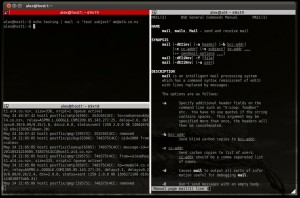Update 1/11/2019
If you’ve reached this article by Googling how to recover a RAID array, I suggest you don’t use this guide. The Linux RAID wiki has much more correct, complete, and authoritative information. In retrospect I was very lucky not to destroy the data, but this article is an interesting account of how I did it.
Update
Before reading this article you should know that it is now quite old and there is a better method – ‘mdadm –assemble –force’ (it may have been there all along). This will try to assemble the array by marking previously failed drives as good. From the man page:
If mdadm cannot find enough working devices to start the array, but can find some devices that are recorded as having failed, then it will mark those devices as working so that the array can be started.
I would however strongly suggest that you first disconnect the drive that failed first. If you need to discover which device failed first, or assemble doesn’t work and you need to manually recreate the array, then read on.
I found myself in an interesting situation with my parents home server today (Ubuntu 10.04). Hardware wise it’s not the best setup – two of the drives are in an external enclose connected with eSATA cables. I did encourage Dad to buy a proper enclosure, but was unsuccessful. This is a demonstration of why eSATA is a very bad idea for RAID devices.
What happened was that one of the cables had been bumped, disconnecting one of the drives. Thus the array was running in a degraded state for over a month – not good. Anyway I noticed this when logging in one day to fix something else. The device wasn’t visible so I told Dad to check the cable, but unfortunately when he went to secure the cable, he must have somehow disconnected the another one. This caused a second drive to fail so the array immediately stopped.
Despite having no hardware failure, the situation is similar to someone replacing the wrong drive in a raid array. Recovering it was an interesting experience, so here I’ve documented the process.
Continue reading →

